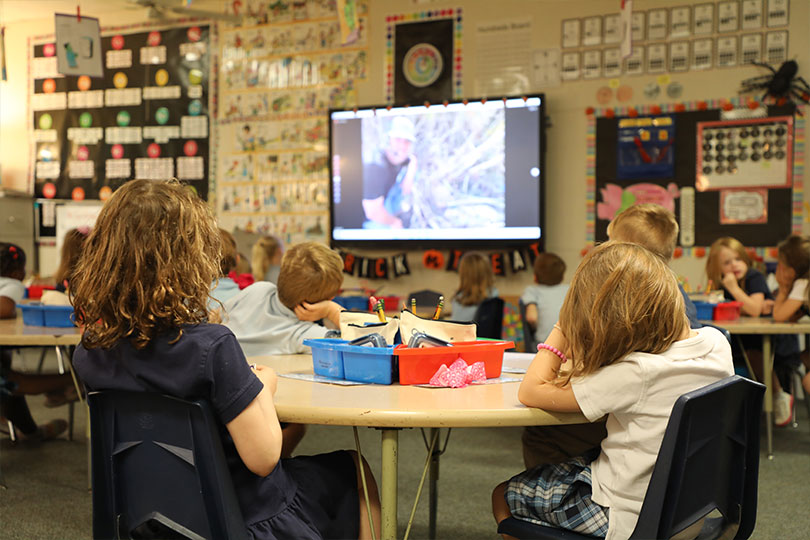By Shelby Shank
Field Editor
Students across the Lone Star State visited a sugarcane farm through Texas Farm Bureau’s (TFB) Farm From School program.
Kindergarten through fifth-grade students virtually “meet” with a farmer or rancher once a month through Farm From School on a video conferencing app.
This month, students learned about sugarcane grown in the Rio Grande Valley. Bryce Wilde, a young farmer in the Valley, shared fun facts and information to help students understand how the sugar they use gets its start on the farm.
“Students across the state tuned into the October Farm From School visit to learn all about sugarcane from Bryce,” Jordan Bartels, TFB associate director Organization Division, Educational Outreach, said. “Students asked many questions and were intrigued to learn more about where our sugar comes from.”
During the 30-minute virtual session, Wilde discussed how sugarcane is planted, harvested and how the crop gets to the mill.
“It’s not as easy to plant sugarcane as it is with other crops,” he said. “That’s what makes this crop so unique to the Valley because it takes a lot of people to plant sugarcane.”
Sugarcane is planted in the ground with a stalk, rather than a seed. On the stalks are internodes. Each of the internodes can produce a vegetative bud that turns into new cane, with an average of three to four new plants per stalk.
The cane is cut once a year and can be left to regrow for four to five years before it needs to be replanted.
“When you cut grass, it grows back. Something similar happens with sugarcane,” Wilde said. “When we harvest sugarcane, we cut it all the way down to a flat surface. Then, it will restart and grow again.”
It takes 12 to 16 months for the cane to mature.
Sugarcane is harvested from the beginning of November to the end of February.
That’s when things start to heat up.
Starting from the outside, Wilde will use a flamethrower to start burning the cane for harvest efficiency.
“This process has benefits of burning off and not allowing so much residue and pests from prior to stick around,” he said. “This process also prevents fungi and other soil-born bacteria from developing and continuing through the entire life cycle of sugarcane.”
The fire will consume the leafy matter of the plant, leaving the cane ready to cut.
Once the cane has been harvested and cut into billets, it is sent to the sugar mill where it will go through a milling and crushing process.
The mill processes about 1,000 tons of raw sugar a day.
Wilde also discussed byproducts of sugar and where they source their water for growing the crop.
“We do a process called flood irrigation that helps our sugarcane stay alive,” he said. “We can’t rely solely on rainfall to sustain and grow a crop. When the time arises, we will occasionally supplement irrigation by flooding the rows of sugarcane with water from the Rio Grande River.”
Click here to watch sugarcane harvest at Wilde’s farm.
Fall sessions
The remaining fall sessions will focus on working farm dogs and citrus.
Last month, students learned about quail with Texas Tech Quail.
More information
The popular program will be back again next spring, and teachers can begin registering online. Click here to sign up by Jan. 11.
Visit texasfarmbureau.org/aitc for more information and the latest announcements on TFB’s Ag in the Classroom activities.

